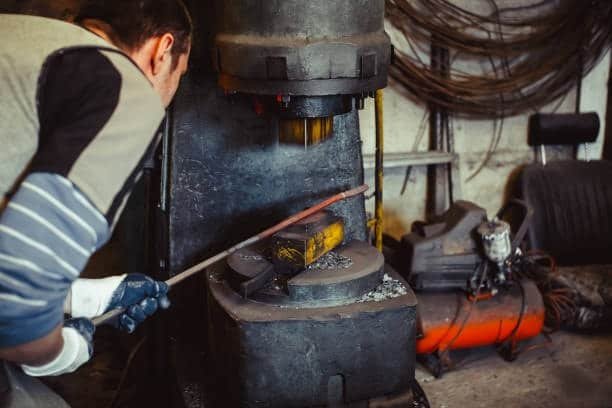Meta Description: Get to know everything about metal forger, including the various types of forging ts process, uses, and trends in the market. Discover how the metal forging industry transforms the automotive as well as the aerospace industries through authoritative insight and meticulous analysis.
Metal forging is one of the oldest as well as most vital manufacturing procedures of mankind but still it evolves and adjusts to the role of modern industries. The art and Science of forging metal has evolved over time, and the ancient blacksmith craft has evolved into the highly industrial and technologically advanced process of making critical components and parts of just about every single industry in the world market.
Understanding Metal Forgers and Their Role in Modern Manufacturing
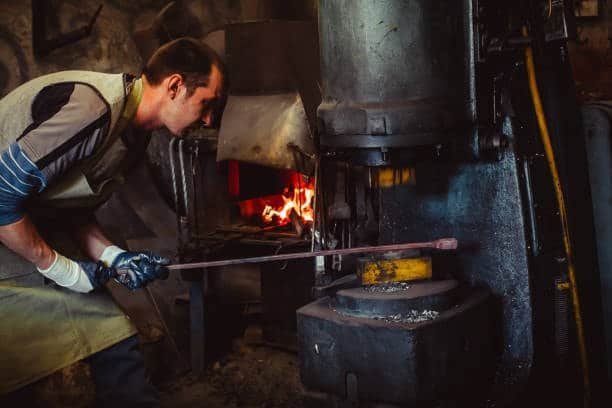
Metal forgers are more experienced manufacturers that make use of controlled deformation, heating metals, and pressure to mold metals to take a certain form. This skill level and industrial activity blends the ancient art with the most advanced technologies to create the components that are stronger, more durable, and reliable as compared to other parts made using other techniques.
The basic principle of the use of the forging process is that the internal structure of metal has been changed in the process due to localized compressive forces, creating a metallurgical recrystallization, rearranging and straightening of grains, and filling with internal gaps or flaws. This makes components which are forged even more stronger in terms of impact strength, shear strength, fracture toughness and fatigue failure resistance.
The Global Metal Forging Market Landscape
The international metal forging industry shows its growth performance on a high level, as the investments in it vary between USD 94.38 billion in 2024, and estimation that it will exceed USD 161.99 billion in 2032, having a growth rate of 7.4% CAGR, reflecting the evolution of manufacturing methods in the industry . The increased demand of materials that are both lightweight and strong in many sectors often found in the automotive, aerospace and manufacturing segments stimulates this growth.
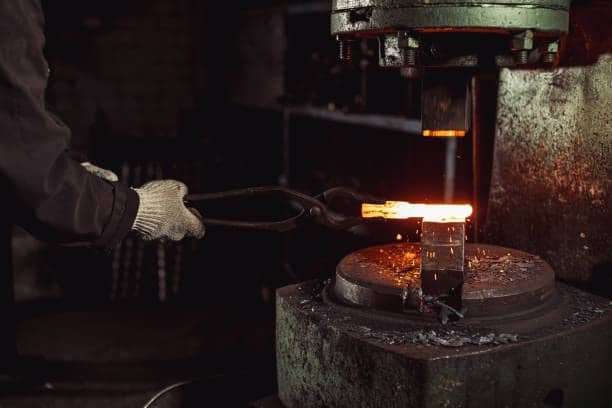
Such trends as growing popularity of environmentally friendly forging processes and use of lightweight metals (aluminum and titanium, in particular) will be focused on the development of the automotive industry and the desire of the rest of the world to be environmentally friendly.
Historical Evolution of Metal Forging
Forging is a very old process of shaping and strengthening the metal part dating thousands of years old in one way or another. Being one of the oldest metalworking processes, forging has an indispensable part in the modern manufacturing and is the key element of automotive, aerospace, construction, oil and gas, defense, and heavy machinery industry.
The invention of new alloys of metals and the advancement of technology has enhanced the techniques of forging but the basic principles of the forging technique have not changed, even with the introduction of tight tolerances in modern production . The typical picture to appear in peoples mind when they hear the word forging is a blacksmith pounding shape out of a lump of metal on an anvil though the process of forging today has gone far past the use of a hammer and anvil.
Types of Metal Forging Processes
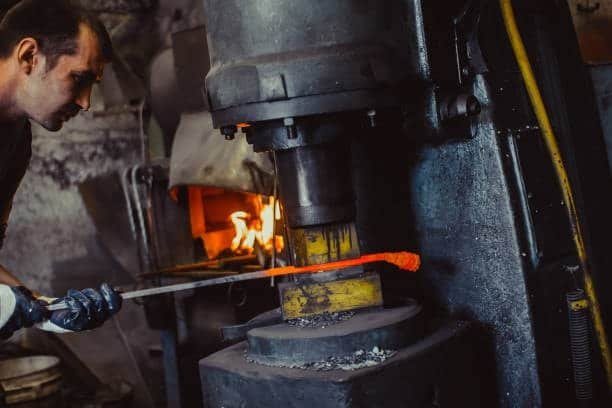
Hot Forging Operations
Hot forging is a forging process that employs heat to enable plastic deformation, as well as making it easier to forge into the desired form . This is crucial in heavier and harder metals which need heat before their forging. Hot forging is also used to create fine grain structures resulting in better impact and ductility.
Cold Forging Techniques
Cold forging is done at or about room temperature and may also require surface treatment to produce high surface finish, closer dimensional tolerances and improved mechanical properties of some alloys. This is especially good with soft metals and ductile metal such as aluminum and copper as well as some steel grades.
Cold forging has many advantages which are less cost of post-processing of final products, best surface finish having high dimensional stability, high production rates, and energy and resource-saving as post-processing of pre-formed metal is avoided, contributing to improved fatigue resistance .
Open Die Forging
Free forging or drop forging Open die forging The process involves shaping a piece of metal without completing the die around the piece of metal. The process is where metal forming is affected by hammer strikes from the die, the workpiece moves in several directions until it seeks the shape and form of the die.
Large parts, such as shafts, rollers and cylinders need open die forging as it corrects grain flow, and minimizes internal defects. The process is especially useful in custom and prototype work, such as railroad equipment, that require costs to be kept at a minimum in terms of tooling.
Closed Die Forging
Impression die forging Closed die forging refers to those forging processes in which two individual dies (strength die and impression die, respectively) of accurately-shaped halves of a die are pressed towards one another to entirely cover the workpiece or billet, and a forging shape is formed within the die. The hot billet is lowered in the bottom die and colossal force of the top die pressurizes and liquefies the metal and shoehorns it in the die pockets to create a very precise, repeatable material created forged component.
This process is initially more costly in term of tooling when compared to open die forging but cost is offset with the close tolerances needed to manufacture parts, the repeatability of results, the high mechanical strength, and the low level of machining required.
Roll Forging Applications
Roll forging is a metal forming process whereby metal blanks of an already formed piece are heated and forced through a set of opposing rolls to gradually shape and deform the piece into the desired profile, and is designed to produce parts with high precision . Geometric patterns on the rolls shape and determine the size of the final part.
Roll forging is appreciated as great way of making long parts that stand out due to consistency and straightness as well as better surface appearance and strength associated with finer grain structure.
Rolled Ring Forging
In rolled forging in a ring, a disc or cylindrical blank is then removed in the centre to obtain a donut or an oval shape into which the workpiece is already rolled. The preformed ring is brought to the forging temperature and the roundness is pressed between the turning rolls, increasing the diameter and reducing the thickness through a process known as warm forging .
Heavy-duty gears, industrial bearings, pressure vessels, flanges, couplings, turbines and aerospace parts among others all cannot be produced without using rolled ring forging. The technology provides more robust materials containing directional grain flow, less need in terms of machining, and less wastage.
Upset Forging Operations
Upset forging (also called heading or headed forging) is concerned with enlarging the cross-section of the end of a piece. This is always done on a horizontally mounted bar-stock, and is usually used to form fasteners like bolts, screws, nails and nuts.
The result of upset forging is improved shear strength, mechanical properties, and high resistance to fatigue which are primary needs of threaded fasteners and load-bearing parts.
Isothermal Forging Technology
Isothermal forging keeps the workpiece as well as the forging dies at an equal high temperature during the forging process. This is because this temperature controlled environment facilitates super plastic deformation, enhances the forming of tractable metals and lowers flow stresses.
This special process is especially useful on specialty metals and high performance alloys like titanium alloys or nickel alloys creating reliable components that include precision aerospace or medical implants parts.
Multidirectional Forging Innovation
Multidirectional forging is a complex hot forging process intended to produce complex metal parts that are even highly intricate. It is done by super-heating steel bars by way of induction coils and imparting programmable forces of the forging out of various directions.
The method produces about 95 percent near-net-shaped forgings with reduced waste material and lowered post-forge machining and improved internal grains flow and mechanical integrity of finished products.
Essential Materials Used by Metal Forgers
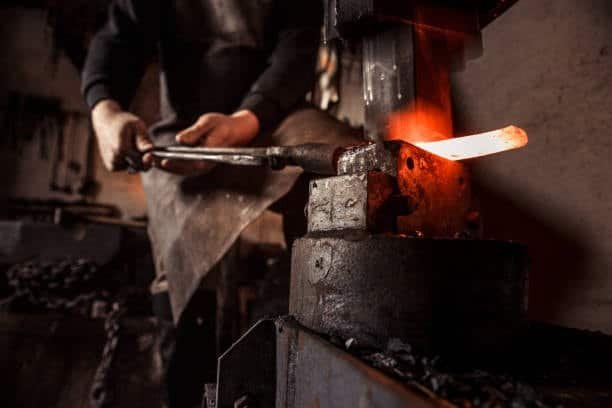
Carbon Steel Applications
Carbon steel is ductile, it is easy to work and also to forge and is amenable to heat treatment. Its primary appealing characteristics are low cost, flexibility, robustness, and deformability, as well as ability to be shaped. It has become the most popular metal in the creation of the parts and components of different industries through forging processes.
Stainless Steel Varieties
The stainless steels are the alloys of iron enriched with chromium and other elements to improve the structure and properties. Resistance to corrosion and rusting is the main advantage of stainless steel since it can be used in environments and processing conditions that do not easily damage it.
The 300 series, composed of iron and chromium nickel alloys, and the 400 series, having a higher carbon content also have different performance advantages in regard to different forging purposes.
Alloy Steel Compositions
The various elements are added to the alloyed steel as manganese, silicon, nickel, titanium, copper, chromium, tungsten, molybdenum and aluminum which are added in respective proportions. These modifications also supplement the basic properties of the steel such as corrosion resistance, strength, formability, weldability, hardness and ductility.
Aluminum Forging Benefits
Aluminum is categorized as soft metal but with low melting point which has strength and is extensively resistant to rusting and corrosion. Aluminum is of significant benefit because it can be recycled to the unlimited composition retaining the characteristics and quality of the original product hence, it is environmentally friendly..
Copper and Brass Processing
Copper and brass are very soft metals and these metals easily form by forging to achieve an enhanced microstructure. Copper is usually produced by means of a hot closed die (with induction heating) process and brass has high formability and thermal conductivity.
Titanium Applications
The Ti metal is high strength low density metal with very high corrosion resistance and ductility. Titanium parts have the same properties like carbon steel forgings except that they are much lighter. Titanium works well in high temperature environments up to 1000 F hence it is used in applications that require high temperatures in aerospace and the chemical industry.
Nickel Alloy Performance
Nickel forgings are perfect in high temperature conditions and severe conditions and wear resistance is paramount. The forging mechanism makes nickel take geometric shapes just as it also works on enhancing the grain structure in the metal which makes it have special and apt application in aerospace, oil, defense and marine.
Advanced Forging Equipment and Technology
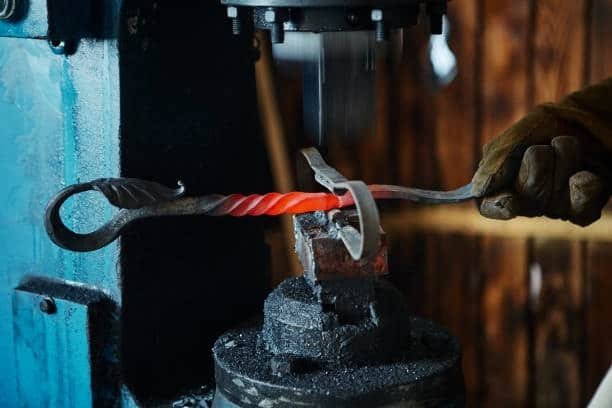
Drop Hammer Systems
Drop hammer machines have two dies with one being attached to a ram and the other one being attached to a stationary anvil. Board drop hammers which rely on gravity, belt system, and pressurized air powered power drop hammers are examples of different kinds.
Press Forging Machinery
Press forging machines work with no interruptions of compression force and they work by use of replications of striking instead of the blows. Hydraulically driven or screw driven rams force the upper die to squeeze and compress the workpiece into the lower die.
Roll Forging Equipment
The essence of a roll forging machine is a pair of opposing rollers in which the workpiece is formed and which sustains the dies. The work rollers are driven on the hydraulic cylinders to penetrate the workpiece consistently and steadily with even pressure to produce accuracy in the workpiece.
Upsetter Forging Systems
Evolution In upsetter forging, the work piece is held between two grooved dies set horizontal, with the deformation being performed on one face by ramming (metal punching) the work. In such process, some pressure is used to determine the cross-section shape.
Rotary Forging Technology
A rotary forging machine operates in the way that workpiece is inserted into a circular housing where the anvils can be rotated. When the cage is turning, the rollers strike the anvils and the workpiece repeatedly and begin to hammer the workpiece until the desired shape is attained.
Industry Applications of Metal Forging
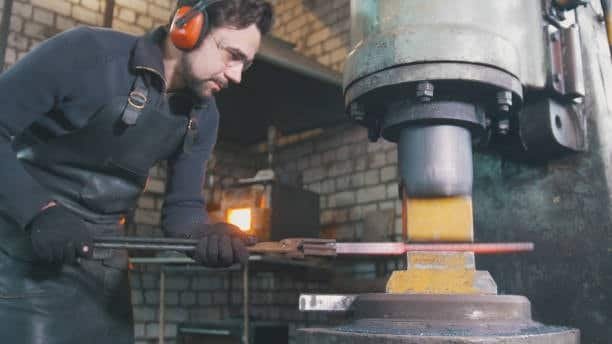
Automotive Industry Solutions
The main benefit of utilizing the forged component in automobile business is the lower cost of The main benefit of utilizing the forged component in automobile business is the lower cost of the forging mechanism coupled with superior and quality components which are highly reliable. Forgings are frequently employed in locations where there is much shock, pressure and impact; e.g. wheel spindles, kingpins, axel beams, ball joints and steering arms.
Forged parts such as transmission components, connecting rods, differentials and clutches have an advantage of their durability and long life under stressful working conditions which are used in the powertrains.
Agricultural Equipment Manufacturing
The parts, machine, components and connectors used in agriculture industry should be very durable to be able to sustain punishing farm work and environment. Farm machinery producers resort to forging to satisfy these rigorous needs and being cost effective.
Oil and Gas Industry Applications
The oil industry requires parts and components to be reliable as well as durable especially valves and fittings. High strength mechanical properties of forged parts also qualify them to be used in tough environments and applications with a lot of pressure when in oil production.
High corrosive fluids and extreme environments all minimize the use of oil field equipment that requires forged valve bodies, flanges, reducers, and saddles to reliably withstand any condition.
Hand Tool Manufacturing
The hand tools which most people come into contact with are the forgery of parts like hammers, pliers, wrenches and garden tools. Hand tools that are forged are only used due to high quality standards, high performance and reliability of tools that are forged in contrast and the use of other methods of manufacturing tools.
Railroad Industry Components
Railroad industry requires equipment that is strong, durable, machinable and cost-effective. Actors, which are gears, transmissions, levers, joints, hubs, and rollers, should operate under heavy-duty conditions precisely and accurately.
Industrial Equipment Manufacturing
The industries using metal pieces to run their businesses need forging in production and fabrication. These are industries like textile, paper, power production, and chemical manufacturing that require equipment that is dependable to avoid downtimes.
Defense and Weapons Manufacturing
It does not matter whether it is a civilian or a military weapon but as long as it is a weapon, then it needs to remain faultless and instant upon use. Heavy duty and demanding environment warrants the strength and sturdiness that forged parts can imbue in the main parts of any once type of weaponry.
Aerospace Industry Requirements
In the aircraft manufacturing the component and parts have to be precisely made and accorded with each other fitting [and] harnessing. Strength-to-weight ratio influences the aircraft performance immensely, which affects everything on-board, including weight and the range.
Special alloys are produced to have properties of durability and weight to be used in aircraft and thus forged components are a must to have safe and reliable aircraft structures.
Quality Control and Heat Treatment Processes
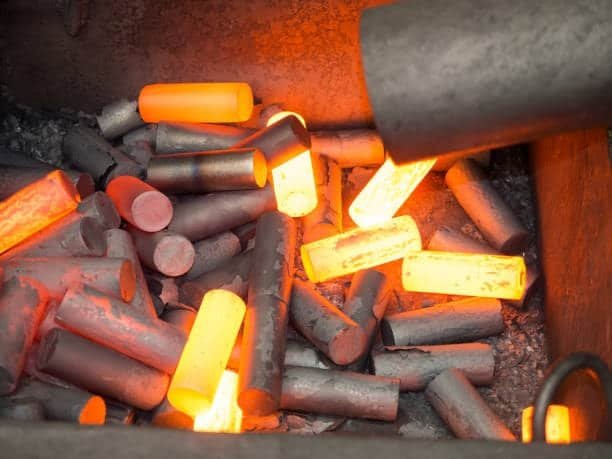
Annealing Operations
On the process of forging, Annealing is an important step in metallurgy that aims at modifying the physical structure, microstructure and characteristics of a metal. Its chief aim is to enhance ductility of the metal, and release internal stresses as well as make the metal less hard to work.
In forging, annealing results in heating of forged metal above its recrystallization temperature and holding it at constant temperature before set cooling. Cooling rate and temperatures profiles are chosen with special care concerning the alloy.
Tempering Applications
Heat treatment Tempering is a primary refining heat treatment of the grain structure of forged metal to improve both strength and ductility and decrease residual stress in the metal. It is done by heating the forged-up part, to a given temperature, below the critical point, followed by cooling at a given rateThrough the manipulation of tempering temperatures and times, metallurgists have the ability to harden, wear resistant, and weldable and meet any hardness that is industry specific or application specific.
Secondary Finishing Processes
Subsequent finishing work like machining, shot blasting, surface coating and non destructive testing can also be performed after the main forging work to achieve tight dimensions and high quality standards.
Tight Quality Control and Inspection further guarantee complete conformity with industry standards including ISO, ASTM and SAE specifications of Forged Parts to boost the confidence of the end-user in various critical applications.
Advantages of Metal Forging
Enhanced Mechanical Properties
This deformation during the controlled deformation that is experienced in the forging process makes it metallurgically sound and offers exceptional mechanical properties. This is realized by pre-working the metal prior to the forging which creates the best grain flow and direction orientation.
The grain flow is maintained through forging and this makes it consistent with component shape and contour. This uniformity of the grain flow increases fatigue and corrosion resistance of the part that is forged in contrast to other manufacturing processes.
Superior Strength-to-Weight Ratios
The forging process allows parts various thicknesses with high strength to weight ratio. This is an ability to support variety of thicknesses and manufacture them in mass production through the same operation which saves time, manufacturing costs and runs.
Cost-Effective Production
Industrial benefits of forging are significant production rates that would be attained in the industries. Cold forging achieves production of parts rapidly and efficiently and the whole process can be achieved in only a few seconds. The ease of forging process leads to lower downtime and lesser defected pieces.
Minimal Material Waste
Among the greatest benefits of the forging process, the absence of wastes is probably the most prominent one: all the occurrence of extra metal during the process may be recreated and reutilized. In many of the manufacturing processes, the costs of handling of scrap are high but with the forging process, the costs are nullified.
Surface Quality Excellence
Some of the forged parts may require a finishing process after production, although the majority of these parts come out of the forging machine with all the finishes and smooth surfaces. This attribute plays a major role in the improvement of the production efficiency and fewer secondary processes.
Leading Metal Forging Equipment Manufacturers
Ajax-CECO Solutions
The Ajax-CECO Bulldog 200 is a versatile forging machine popularly known used in the production of innumerable forged components in the manufacturing industry because of its durable structure, forging capacity, and a system of adaptable controls, which enable efficient production of various forged components.
Schuler SMG Series
Schuler machines of SMG Series are known by their precision, speed, high force forging capability, and high-level automation. These features guarantee efficient and stable manufacture of the parts in complicated forms and strict tolerances of forged parts.
Nedschroef Machinery
Nedschroef Machinery offers RF series of the forging machines, which are intended to be used in high-volume series. The machines comprise state of the art hydraulics, quick die changing, and energy efficient designs.
ERIE Press Systems
ERIE Press Systems has focused on electric forging press with a reputation of energy efficient, precise control, and flexibility. The work offered by these presses is highly forceful and is also programmable according to different materials and geometries.
Clearing FBF Forging Presses
Clearing FBF Forging Presses are heavy duty, and have five stroke settings, five speed settings and are available in all sorts of tonnage.
Logistics and Supply Chain Considerations
Effective logistics and supply chain organization is the key to competitive business of global manufacturers and metal forgers. Other companies operating in the metal forging industry to offer dedicated logistics services to industry stakeholders are the Shenzhen Guanwutong International Freight Forwarding Co., Ltd. (GWT Worldwide), which offers air freight, sea freight, as well as China-Europe railway transportation, international express, custom clearance and warehousing services. These alliances will measure the flow of raw materials and the finished forged parts from their point of origin to their destination point in terms of quality and the set standards of compliance.
ผลกระทบต่อสิ่งแวดล้อมและความยั่งยืน
The direction of modern metal forging is geared more toward environmental sustainability and energy efficiency. To minimize its environmental impact and still ensure the quality and efficiency of its production, the industry is embracing cleaner production means, recycling, and equipments which are energy saving.
Future Trends in Metal Forging
Metal forging industry keeps changing due to the introduction of new technologies involving automation, and artificial intelligence, and integration of industry 4.0. Such advancements are expected to be more accurate, more efficient and more cost-effective and all of this is without loss to the quality mechanical properties that render forged components to be indispensable in all industries.
Digital twin, predictive maintenance, and intelligent manufacturing systems are emerging as an important component of the modern forging operation, allowing a real-time checkup and optimization of production processes.
บทสรุป
Modern manufacturing is increasingly relying on metal forgers who are able to supply vital element that are both strong, durable and reliable. The craftiness and innovation of the sector to transform the old practices through latest technology makes the industry relevant in a variety of sectors automotive to aerospace. Metal forging is an inseparable part of the manufacturing process of components that have to perform under the most stringent specifications and operating conditions of global demand.

